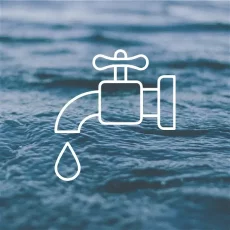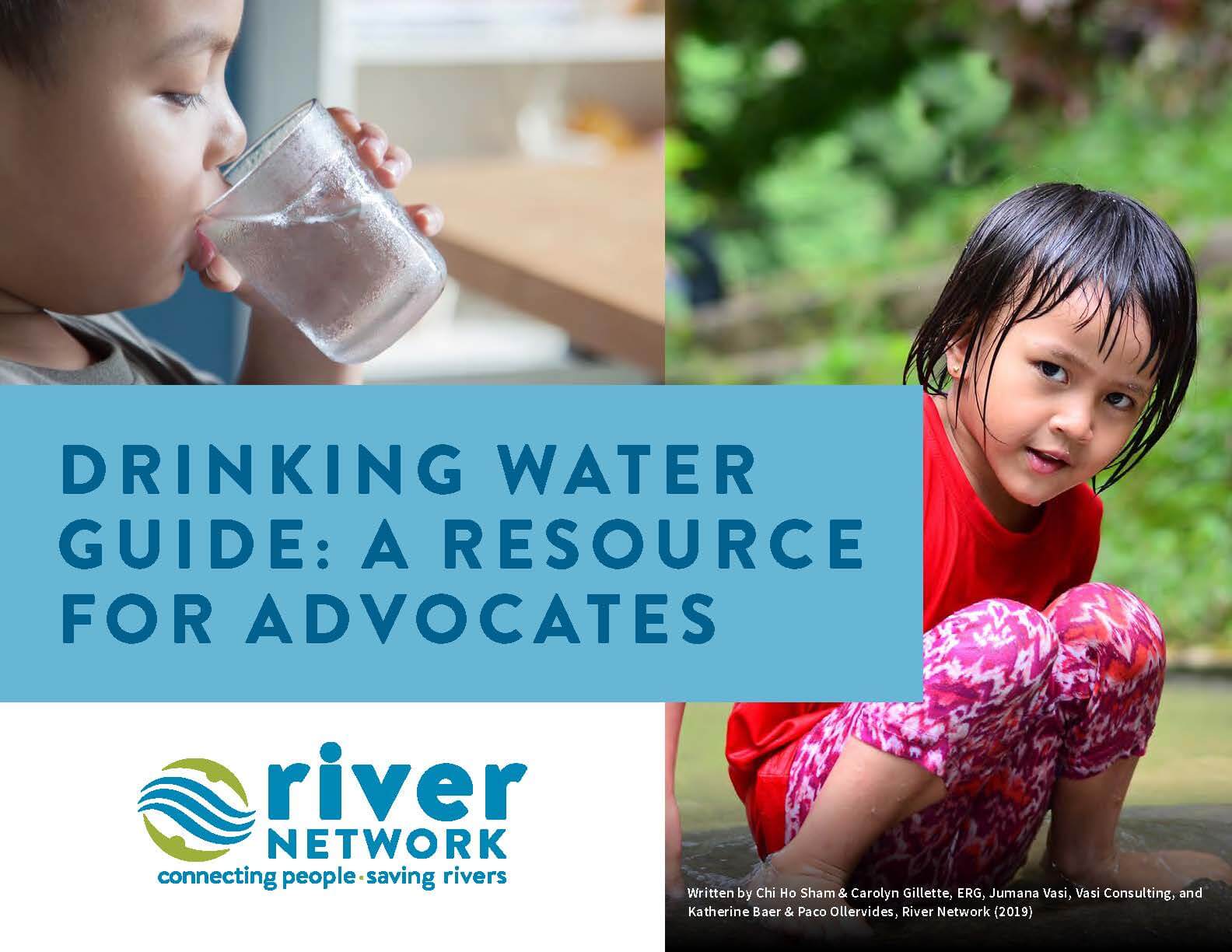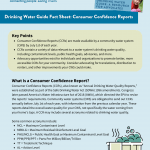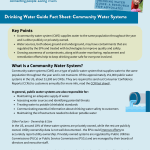Drinking Water Guide: A Resource for Advocates
We have developed fact sheets based on the content in the Drinking Water Guide for easier sharing. Check out the first two on Consumer Confidence Reports and Community Water Systems. Click here to see more fact sheets!
Join our Drinking Water Access Exchange group, a platform for all working on drinking water access issues to share solutions, collaborate, and learn more about what’s being done across the country to end water shutoffs and ensure safe and affordable water for all.
River Network’s Drinking Water Guide, available in both English and Spanish, is a first step in galvanizing a national network of advocates for safe, clean, affordable, and sustainable drinking water and drinking water systems.
Supported by the C.S. Mott Foundation, and guided by a Great Lakes–based Advisory Committee, the Drinking Water Guide provides in-depth information, resources, and case studies organized into sections that answer these fundamental questions:
Because drinking water safety, sustainability, and access are rising concerns for communities across the country, River Network supports groups and individuals advocating for safe, clean, and affordable drinking water. A philosophy of water equity—the idea that all people deserve access to safe, affordable water—grounds this Drinking Water Guide. River Network hopes that the guide will serve as a key resource for groups and individuals working on these issues to better understand, integrate, and elevate issues of equity and justice as part of their drinking water advocacy.
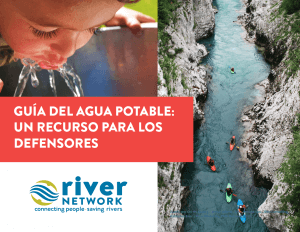 The Drinking Water Guide in Spanish
The Drinking Water Guide in Spanish
We can’t talk about drinking water without talking about equity. Communities across the country – primarily low-income, communities of color – struggle to afford their water, or are faced with concerns over contamination from toxins, like lead and PFAS, or both. What’s more, drinking water violations are more likely to occur in places where residents are people of color and access and availability also vary by race and class.
In many ways, equity means access. To increase the reach and relevance of our Drinking Water Guide, we worked with staff from Corazón Latino on a Spanish language translation of our guide. This version has been adapted to reach the Latinx community with both culturally relevant language and aesthetic – with adapted images and examples to resonate with the community and equip them with the tools needed to work toward change in their very own communities.
Why River Network Created the Drinking Water Guide
Clean, safe, and affordable drinking water is critical to personal health and the health of our communities and economy. River Network believes that everyone should have access to drinking water at a cost that does not interfere with other essentials, such as food, health care, housing, transportation, and education.
Challenges to drinking water are varied across U.S. communities and include threats from aging infrastructure, active and legacy pollution, climate change, mismanagement, dysfunctional regulatory framework, attacks on federal safeguards, and a shortage of funding to address these problems. Water suppliers continue to invest billions of dollars annually, mostly at the local level, to keep our water safe to drink; and yet water crises continue.
Many households face affordability challenges. Food and Water Watch estimates that, in 2016, 15 million people in the U.S. experienced a water shutoff. Cities with higher rates of poverty and unemployment had the highest number of homes with water shutoffs. Meanwhile, water utilities struggle to fund maintenance and replacement of aging pipes. Drinking water may not be as secure as generations of Americans have come to expect.
The media has spotlighted drinking water crises around the country—notably in Toledo, Ohio; Charleston, West Virginia; and Flint and Detroit, Michigan. In fact, these are harbingers of more wide-spread issues. Such drinking water crises point to general vulnerabilities of our drinking water systems and contamination threats from lead, nutrient runoff, per- and polyfluoroalkyl substances (PFAS), and chemical spills. In places such as California’s Central Valley, dry wells and rising costs make drinking water access and affordability an issue for many families who have their water shut off when they can no longer afford to pay water bills.
Approximately two-thirds of our drinking water comes from streams, rivers, and other surface waters, and the great majority of infrastructure investment is made at the local level. Drinking water issues are critical focuses for local community and water groups. River Network supports and connects groups working on drinking water issues as part of our focus on Safe and Affordable Drinking Water as outlined in our current Strategic Plan.
Get Support For Drinking Water Advocacy
Sign up for our newsletter today to stay informed about drinking water issues and opportunities to receive training and support.


